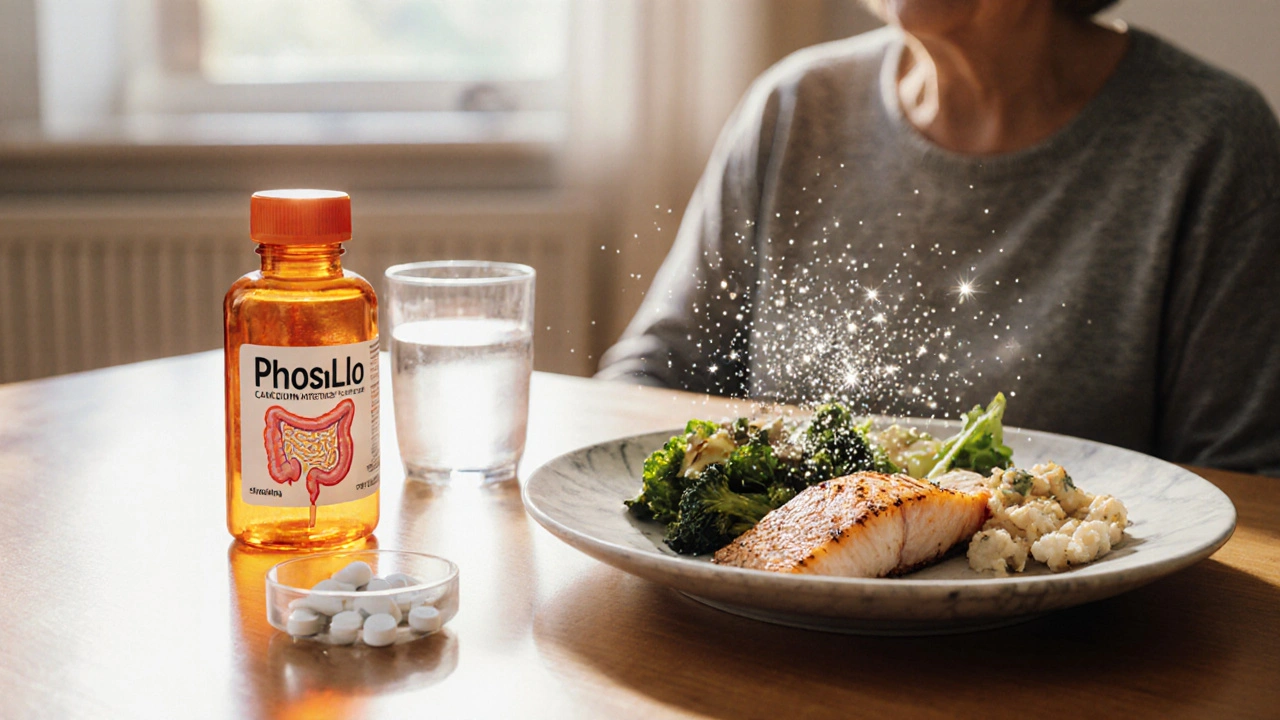CKD Phosphate Binders: What They Are and Why They Matter
When dealing with CKD phosphate binder, a medication that lowers blood phosphorus in people with chronic kidney disease. Also known as kidney disease phosphate binder, it helps keep the mineral balance steady and protects bones and heart.
How CKD, Phosphate, and Binders Connect
Chronic Kidney Disease (Chronic Kidney Disease, a condition where kidneys lose filtering power over time) often leads to hyperphosphatemia, which is too much phosphorus in the blood. Hyperphosphatemia, elevated serum phosphate that can damage vessels and bones is dangerous because the kidneys can’t clear it properly. That's why a CKD phosphate binder is prescribed: it grabs dietary phosphate in the gut so it never reaches the bloodstream.
Dialysis (dialysis, a treatment that artificially filters blood when kidneys fail) helps remove excess waste, but it doesn’t fully control phosphate. Patients on dialysis still need binders to keep levels in check, especially on days between sessions. This relationship shows that binders are a core part of a CKD management plan, not a backup.
There are many binders on the market, but two groups dominate: calcium‑based and non‑calcium‑based. Calcium‑based options (like calcium carbonate) are cheap and provide extra calcium, but they can raise calcium levels and increase vascular calcification risk. Non‑calcium binders avoid that problem but often cost more.
Sevelamer (Sevelamer, a polymer binder that traps phosphate without adding calcium) is a popular non‑calcium choice. It also lowers LDL cholesterol, which can be a bonus for heart‑health‑concerned patients. Another example is lanthanum carbonate, a chewable tablet that works similarly but may cause stomach upset for some users.
Choosing the right binder involves looking at serum phosphate, calcium, and PTH levels, plus patient preferences. Some people can’t swallow large pills, so a powder or chewable form works better. Others need a binder that doesn’t add calcium because they already have high calcium scores. Regular lab checks every 1‑3 months let the doctor tweak the dose or switch to a different binder as needed.
Guidelines from nephrology societies recommend keeping phosphate in the 3.5‑5.5 mg/dL range for most CKD patients. Meeting that target usually requires a mix of diet changes (lowering processed foods and dairy), dialysis adjustments, and the right binder. Educating patients about reading food labels, avoiding phosphate additives, and timing binder doses with meals makes the whole approach more effective.
Below you’ll find a curated list of articles that dive deeper into each of these topics—whether you’re looking for binder comparisons, diet tips, or the latest research on phosphate control in CKD. Explore the posts to get practical advice you can use right away.
PhosLo (Calcium Acetate) vs. Other Phosphate Binders - Which One Fits Your Needs?
A detailed comparison of PhosLo (calcium acetate) with key phosphate binders, covering efficacy, cost, pill burden, side effects, and how to choose the right option.
